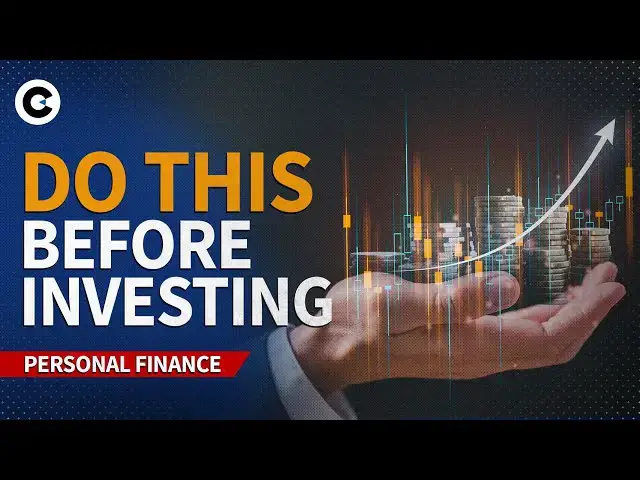0:00
what are five questions to ask before
0:01
investing your money number one do you
0:03
have an emergency savings net having a
0:05
healthy emergency savings net is
0:07
fundamental to any financial plan
0:09
industry consensus is that you should
0:11
have at least 3 to six months worth of
0:13
spending in your emergency savings
0:15
before you even consider starting to
0:16
invest two how long are you happy to
0:19
lock your money away for if you have
0:21
savings over and above your emergency
0:23
savings net you're happy to leave and
0:25
not touch for 5 years or more then you
0:27
might be ready to invest three what's
0:29
the right platform for you investment
0:31
platforms all charge different fees
0:33
which one is best for you will depend on
0:35
how much money you have to invest how
0:37
frequently you'll be buying and selling
0:38
Investments and what types of
0:40
Investments you'll be buying some offer
0:42
lower trading fees if you commit to
0:44
investing a regular amount each month
0:46
there are good comparison tools out
0:47
there and some platforms have
0:49
calculators which let you see how much
0:51
you'll be paying in fees on your
0:53
portfolio when you're selecting an
0:55
account think about opening an Isa as
0:57
that will mean any gains you make
0:58
taxfree you can currently save up to
1:00
£20,000 a year into an Isa four how
1:04
involved do you want to be if you want
1:06
to start investing you can either buy a
1:08
ready-made portfolio where you decide
1:10
your risk tolerance and your money goes
1:11
into a range of Investments that suit
1:13
your risk level without you having to
1:14
decide anything or you can pick your own
1:16
Investments this gives you more
1:18
flexibility but involves careful
1:20
research and decision- making the
1:21
difference is a bit like getting a ready
1:23
meal from a supermarket or choose the
1:24
ingredients to cook for yourself there's
1:27
no right or wrong answer it's just your
1:28
personal preference five what's your
1:31
risk tolerance whichever option you
1:32
choose you need to decide your risk
1:34
tolerance if you go for a readymade
1:36
portfolio your risk tolerance will be
1:38
used to define what balance of
1:39
Investments you hold if you want to
1:41
choose your own Investments your risk
1:43
tolerance should help Define what kind
1:44
of portfolio you build most investors
1:47
hold stocks bonds or a mix of both
1:49
people with a lower risk tolerance will
1:51
often invest mostly in bonds this is
1:53
basically an iio you where you agree to
1:55
loan your money to either a company or
1:57
government those with a higher risk
1:58
tolerance are likely investing mostly in
2:00
stocks and shares these are stakes in
2:03
individual companies if the value of the
2:05
company grows then the value of your
2:06
shares should grow but company share
2:08
prices can be volatile so this is not
2:10
for the faint-hearted the more common
2:12
way for people to access stock markets
2:14
is via a fund funds are investment
2:16
vehicles Which pull people's money and
2:18
put it into a range of Investments for
2:19
you you can buy Equity Funds which
2:21
invest in a range of company shares or
2:23
you can buy bond funds which invest in a
2:25
selection of bonds investing in a fund
2:27
should help to reduce your risk as your
2:29
less exposed if one investment goes
2:31
badly it's worth remembering that if you
2:33
go for a fund there'll be fees charged
2:35
on top of the fees you're already paying
2:37
to your investment platform so make sure
2:39
to check what they are this is not
2:40
Financial advice if you want Financial
2:42
advice speak to a financial adviser


